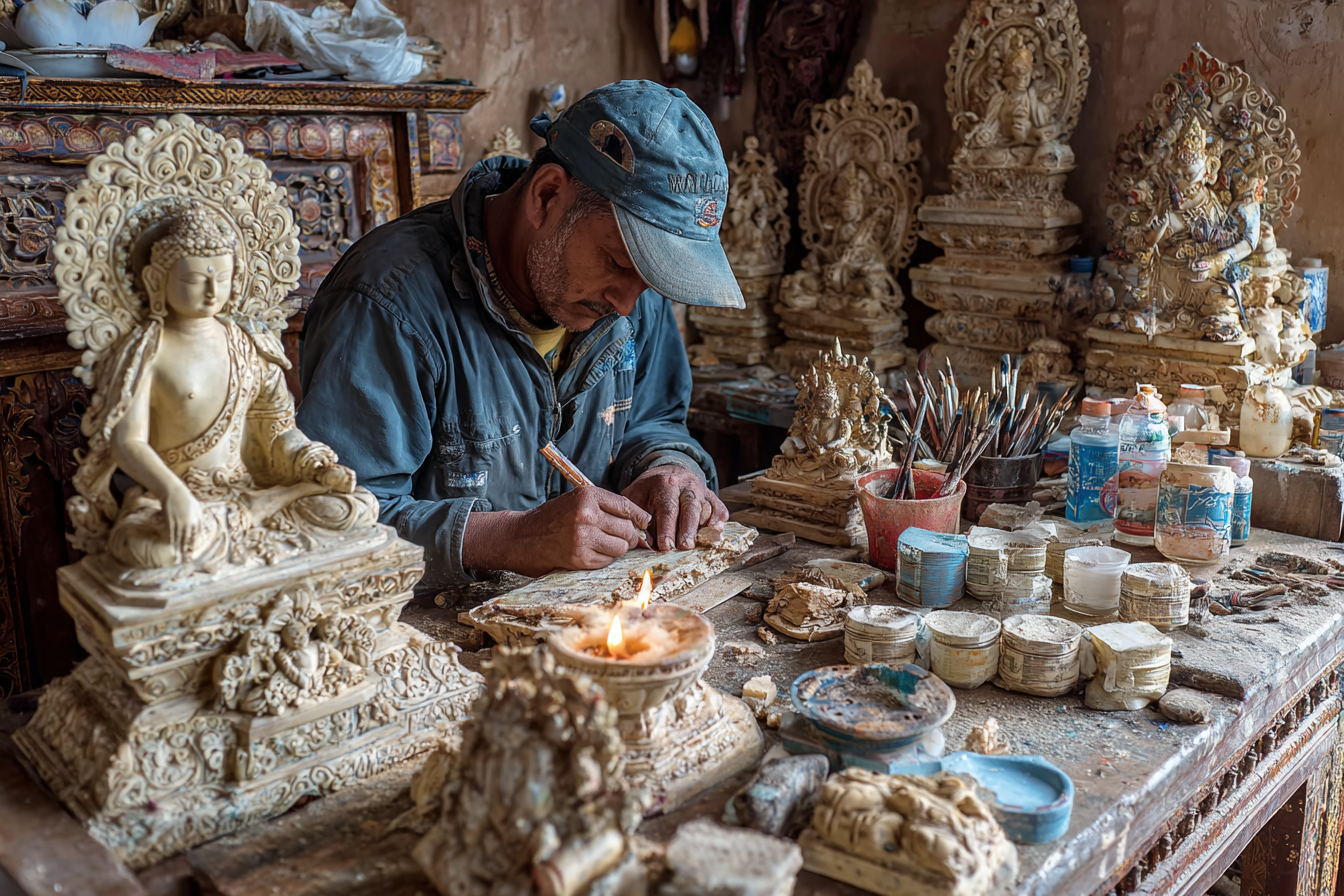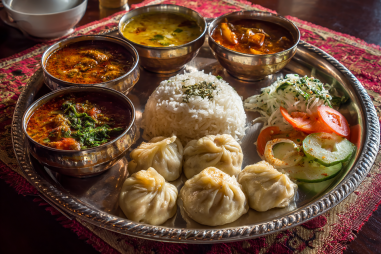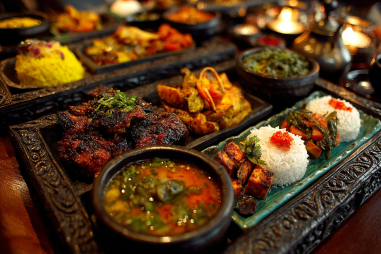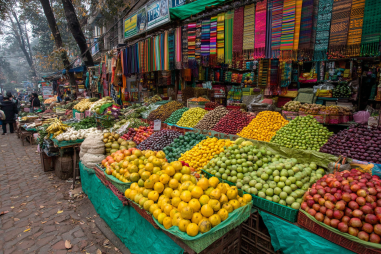Nestled in the heart of Nepal, Patan is a city that breathes artistry and tradition. Known also as Lalitpur, meaning “City of Fine Arts,” Patan has been a pivotal center for Nepalese art and culture for centuries. Walking through its ancient streets, you are enveloped by a heritage rich with exquisite metalwork, delicate pottery, and masterful wood carvings. This city is not just a place to admire art but a living museum where traditional craftsmanship continues to thrive, passed down through generations of skilled artisans.
An Artistic Heritage Rooted in Tradition
Patan’s artistic legacy stretches back to the Licchavi period (approximately 400-750 AD) and flourished during the Malla dynasty (12th-18th centuries). The city became a religious and cultural hub, attracting skilled artists who infused their creations with spirituality and intricate designs. Over time, Patan’s artisans developed unique techniques and styles, especially in metalwork and sculpture, which earned the city international acclaim. The vibrant culture of art remains central to Patan’s identity, where traditional workshops stand side by side with temples and palaces.
Traditional Crafts That Define Patan
Patan’s crafts are diverse and deeply reflective of Nepalese culture. Among the most revered are:
- Metalwork: Perhaps Patan’s most famous craft, metalwork features beautifully detailed bronze statues of deities, ritual objects, and household items. Techniques like repoussé (hammering metal from the reverse side) highlight the artisans’ incredible finesse.
- Wood Carving: Intricate wooden windows, doors, and panels adorn Patan’s architecture. The detailed carvings depict religious iconography, mythical figures, and natural motifs.
- Pottery: Using local clay, artisans craft traditional pots, vases, and decorative items, often embellished with painted patterns inspired by nature and religious symbols.
- Gold and Silver Jewelry: Crafted with precision, jewelry pieces incorporate traditional motifs and are worn during festivals and ceremonies.
- Thangka Painting: This sacred Buddhist art form involves painting intricate scrolls on silk, depicting deities, mandalas, and religious scenes in vivid colors and fine detail.
Renowned Artisan Workshops and Studios
When visiting Patan, one of the most rewarding experiences is exploring its artisan workshops, where creativity blends with centuries-old techniques. Some notable places include:
- Patan Metal Craft Centre: A cooperative of metal artisans showcasing exquisite bronze and copper works, this center offers insight into traditional casting methods and the chance to purchase authentic pieces.
- Wood Carving Studios in Patan Durbar Square: Many skilled woodcarvers operate small family-run workshops near the iconic square, where detailed carvings on windows, doors, and furniture are made.
- Lalitkala Mandir: An art school and gallery founded to preserve traditional arts, including metalwork, painting, and sculpture. Visitors can witness training sessions and view contemporary adaptations of traditional crafts.
- Potters’ Workshops in Jawalakhel: This suburban area hosts a vibrant pottery community offering handmade ceramics, perfect for those interested in functional art with cultural flair.
- Thangka Artisans in Patan: Several families and studios focus on preserving the intricate craft of Thangka painting, often blending religious tradition with modern themes.
The Craftsmanship Behind Patan’s Art
Each traditional craft in Patan unfolds a world of skilled techniques and carefully selected materials. Understanding these processes enhances the appreciation of these artworks.
Metalwork Techniques
Metal artisans typically use the lost-wax casting method to create bronze statues. The process begins by sculpting a detailed wax model, which is then encased in a clay mold. Upon heating, the wax melts away, leaving a cavity filled with molten metal. After cooling, the mold is broken to reveal the statue, which is then polished and refined with hand tools.
Wood Carving Methods
Woodcarvers carefully select hardwoods like sal and teak, prized for their durability. Using chisels, gouges, and knives, artisans intricately carve religious motifs and elaborate patterns. Many of these pieces are painted or lacquered to enhance their beauty and preserve the wood.
Pottery Crafting
Local clay forms the base for pottery, shaped on traditional wheels or by hand. After drying, pieces are fired in kilns to achieve strength and a rustic charm. Artisans often decorate their pottery with natural dyes and motifs rooted in local tradition.
Jewelry Making
Gold and silversmiths use techniques like filigree and embossing, shaping delicate jewelry by hand. Each piece carries symbolic significance, used both for adornment and ceremonial purposes.
Thangka Painting
The creation of Thangkas requires precision and patience. Artists prepare cotton or silk canvases coated with a chalk and glue mixture. Using mineral pigments and gold leaf, they meticulously paint sacred imagery under exact religious guidelines, making Thangkas both art and spiritual practice.
Where to Find Authentic Souvenirs
Patan offers a wealth of spots to purchase authentic crafts, ensuring your souvenirs tell a genuine story of Nepalese artistry:
- Patan Durbar Square Market: Amidst the historic square, stalls and shops sell metalwork, wood carvings, and jewelry directly from local artisans.
- Golden Temple Area Shops: A hub for bronze statues and ritual items, perfect for those interested in religious artifacts.
- Jawalakhel Pottery Market: Ideal for unique handmade ceramic pieces that range from decorative pots to functional kitchenware.
- Lalitpur Arts and Crafts Center: Offering high-quality crafts with certificates of authenticity, this place ensures the craft supports local artisan communities.
- Thangka Art Galleries: Select galleries in Patan display and sell authentic Thangkas, often with explanations of their religious significance.
Supporting Local Artisans and Tradition
When buying crafts in Patan, choosing authentic pieces helps preserve these time-honored traditions. Supporting local artisans ensures that skills are passed on, families sustain livelihoods, and the cultural heritage remains vibrant. Tourists can further enrich their experience by visiting workshops, engaging with craftsmen, and sometimes participating in crafting demonstrations.
Many organizations and cooperatives in Patan work to protect artisans from mass-produced imitations, encouraging sustainable practices and fair wages. By prioritizing ethically sourced crafts and learning about their history, visitors play a vital role in strengthening the community.
Preserving Patan’s Artistic Legacy
Patan is more than a repository of beautiful crafts; it is a dynamic community where ancient artistic traditions coexist with the rhythms of modern life. Efforts by local leaders, cultural institutions, and international partners continue to safeguard Patan’s heritage. Through education, tourism, and patronage, the city’s art forms remain alive and vivid, inspiring new generations of artists.
For travelers, exploring Patan’s arts and crafts offers a unique glimpse into Nepal’s soul—a place where every carved window and shimmering statue tells a story of devotion, skill, and cultural pride. Engaging with this vibrant artistry not only enriches your visit but contributes to the continuation of a remarkable tradition.







